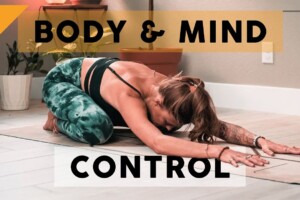
Meditation poses can be a great way to relax and relieve stress. There are several different types of meditation poses that you can try out. Some of the more popular poses are: Standing, Kneeling, Walking, and Sitting.
Sitting
Sitting meditation poses can be effective in calming your emotions and providing soothing energy to your body. They can also help strengthen your emotional and mental well-being. However, it is important to practice them with proper attention. You should always be aware that prolonged meditation sessions can result in minor or even major discomfort. If you experience pain or other discomforts, it is advisable to change the position to something more comfortable.
There are several types of sitting meditation postures, including the easy pose, the lotus position, and the Burmese. These can be done on a mat or on the floor. Some of them are more flexible than others. Choosing the one that suits you best will help you get the most out of your meditation.
The easiest and most common sitting meditation pose is the easy pose. Whether you’re sitting on a mat or the floor, it requires just a few simple adjustments to your body.
A cushion between your heels and the bottom of your feet can be helpful in keeping your legs and knees from straining. It is also advisable to avoid leaning forward too far. This puts pressure on your feet and can be uncomfortable.
Standing
If you are suffering from chronic pain or are just bored sitting, you might want to try a standing meditation. It can strengthen the muscles in your body and release long-held stress. Standing meditation uses the same techniques that are used in sitting meditation, but requires a slightly different set of hands and legs.
First, make sure you have a comfortable spot to do your practice. For example, you could sit in a chair with a cushion. Using a cushion can help you keep your spine straight, tilt your pelvis forward, and lift your hips. You can also sit in a cross legged position.
To get the most out of your practice, you should also know what you are doing. A good way to do this is to create a mental map of your body. This will help you understand how your body works and build a more thorough sense of control over it.
Another useful technique is to use a timer. This can be helpful when you are first starting out and will help you monitor your progress.
Kneeling
Kneeling meditation poses are a great way to practice meditation. They are a good alternative to sitting on a chair or laying down. However, they can be a challenge for beginners. If you’re struggling with knee pain, try meditating in another position.
To get into a more comfortable kneeling meditation pose, try a cushion between your heels and the floor. This will support your hips and alleviate pressure on your spine. You may also want to invest in a zabuton mat. These are round cushions that go on top of the ground.
Another good idea is to use a meditation bench. Sitting on a meditation bench can provide better support for your lower back. It can also help to take the pressure off your legs.
Some people prefer a lying down meditation pose. When you lie down, you should position your feet hip-distance apart and your toes should be turned out to the side. Also, keep your gaze centered and try to relax your shoulders.
Walking
Walking meditation is a form of mindfulness that involves paying attention to sensations in your body. In many spiritual traditions, walking meditation is a daily part of retreat life. It can also be used as a supplement to seated meditation or for people who need a short break from their usual activities.
When you first begin a walking meditation practice, you should give yourself a few minutes to establish a comfortable pace. Once your mind is in the flow, you may find that your emotions are heightened. During this time, you can focus on your feelings as they arise and pass away.
If you start to feel agitated, you should walk very slowly. Having your chin tucked too far towards your chest can also trigger an emotional response.
To maintain a steady rhythm, you can take a few breaths and let your thoughts flow. You can also take note of your body as you walk, including the feeling of the air on your skin, the sounds around you, and the temperature of the air.
Did you miss our previous article…
https://quietmeditations.com/chiropractic-and-craniosacral-therapy-for-spinal-energy-flow/





